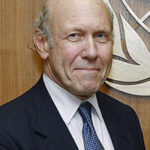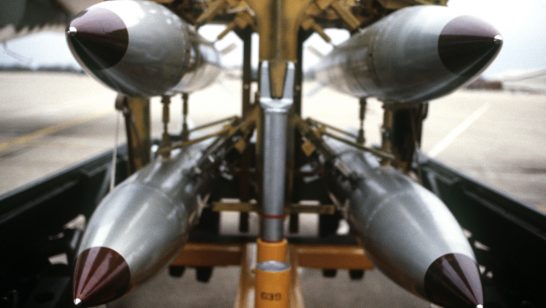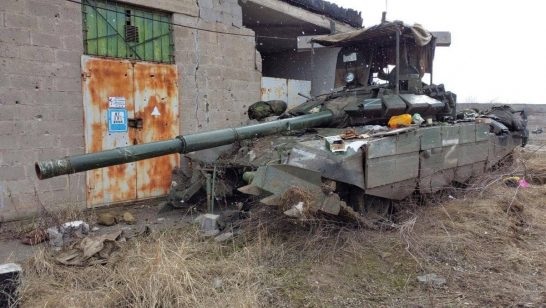
What Americans and Europeans have not yet fully realized is that what is happening in Ukraine is just one part of Russian President Vladimir Putin’s broader strategy for what Russians call their “near abroad.” The immediate focus is on the Black Sea-Caspian region, the Caucasus and Central Asia, the heart of the “near abroad.” Putin’s overall objective is to take back as much as possible of the full territory of the former USSR, by whatever means might be successful. This will be done in the Russian way — through a variety of control mechanisms, association agreements, stationing of forces, or whatever else creates leverage to control the governments of these vast regions.
The Western response should therefore be strategic, designed to counter both the immediate challenges in Ukraine, and this broader Russian scheme. The aim is to ensure the independence of the former USSR states, and to keep the current narrow corridor from Europe across the Black Sea and the Caucasus to Central Asia open. This must be a key objective for the United States and Europe, for without it the entire Eurasian continent north of the Himalayas will be controlled by Russia and China, with Western access only possible with the consent of one of these powers.
Of course, Central Asia and the Caucasus are distant from the key priorities of the West. Or are they? The US and NATO could not have supplied their military forces in Afghanistan during the 9/11 war there without transit routes through this vast region, and the Central Asian/Caucasus gas and oil transiting in current or planned pipelines are essential for Europe. In addition, many Western companies are helping to develop the region. So Central Asia and the Caucasus are not as distant from Western concerns as some might like to think. Moreover, economic growth in this vast region will affect many aspects of the world’s economy, so it is not some distant consideration.
Although most of the world did not notice, the sporadic gunfire which has been exchanged between the armies of Armenia and Azerbaijan has ratcheted up in parallel with events in Ukraine. These countries have faced each other in hostility for the last twenty years in the hills of western Azerbaijan, following the seizure of almost twenty percent of Azerbaijan’s territory by Russian-supported Armenian troops. Putin convened a meeting of the Presidents of Armenia and Azerbaijan in Sochi in August — his way of showing the world that the Caucasus is within Russia’s region of influence, and of making sure the countries of the region know that it is Russia which encourages or terminates sputtering conflicts in the near abroad, when it wishes to do so. This is also the situation in Eastern Ukraine, in case any Westerners have not understood — Russia can end the fighting when it wishes, and it will do so when it has recuperated its basic leverage on the government of Ukraine.
As we have known, but somehow left aside in pure naiveté, Russia considers its so-called “near abroad” a part of its national identity, its vital interests, and its natural area of control. In an essay published twenty years ago by an institute at the University of Hamburg [1], I pointed this out very clearly, and warned of the problems we are now facing, starting with Crimea. Russia will respond with the usual complex Russian manoeuvres when it considers that its control over these vast regions is somehow threatened. This is in the Russian culture — a variety of small efforts, each of a somewhat different nature, confuses the opponent. The West’s inherent need for absolute clarity plays into Russia’s hands. Moscow’s manoeuvres will never be clearly aggressive, and the military units involved will not be clearly identifiable as Russian troops. Ambiguity and a variety of small, seemingly unrelated moves are not coincidental, nor are the efforts of small “volunteer” groups supposedly acting on their own. These initiatives are part of a coherent plan; they constitute the strategy. Vladimir Putin is a master of it, and he always keeps a poker face.
Confronted with this situation, the West must develop a new strategy of its own. It is not enough to invoke economic sanctions which hurt western countries as much as they do Russia, or to announce the creation of rapid-deployment units. Putin’s challenge is broad and many-faceted, and the response must be shaped to meet this new challenge. Just as NATO for years faced Soviet tanks with its own in Germany, the Western Allies must develop effective responses to this new sort of threat. A Russia which is seeking to re-establish control over the former Soviet space must be considered as a challenge to the very notion of a free and democratic Europe.
——-
[1] ‘Russia’s “Near Abroad” – A Dilemma for the West,’ by John J. Maresca, chapter in “Crisis Management in the CIS: Whither Russia,” Hans-Georg Ehrhart, Anna Kriekemeyer and Andrei V. Zagorski, eds., Institut fur Friedensforschung und Sicherheitspolitik, Hamburg University, 1995.
The opinions articulated above represent the views of the author(s), and do not necessarily reflect the position of the European Leadership Network or any of its members. The ELN’s aim is to encourage debates that will help develop Europe’s capacity to address the pressing foreign, defence, and security challenges of our time.



